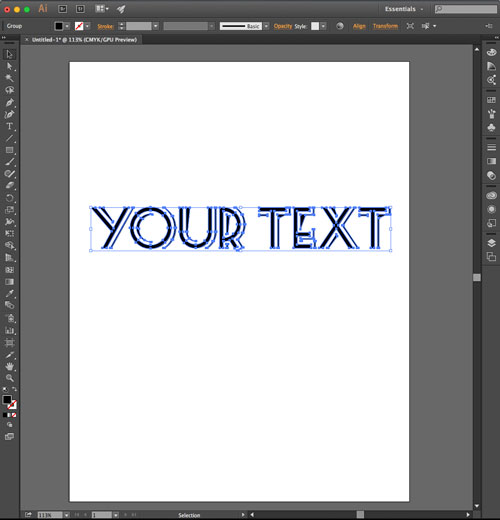

Give by helping others learn and improve their skills, critique and receive critique on the latest user designs, or simply sit back and enjoy casual discussion Illustrator related! This group is for general discussion, showing off your designs, questions, tricks, techniques, troubleshooting and so forth. This is the hub for all things Adobe Illustrator. Moreover, if you have any designs or sketches, you can vectorize them as well.🎨🖌️ADOBE ILLUSTRATOR ON DISCORD THE SIDEBAR
Vectorize illustrator how to#
Now that you know how to do it, you can try it out on different images to familiarize yourself with the presets. For example, SVG.Īs you can see, vectorizing an image with Adobe Illustrator is pretty straightforward. You’ll want to save it in AI if you think you might need to edit vector graphics in Illustrator.

Vectorize illustrator pdf#
The available formats are SVG, AI, EPS, PDF and many more. When you’re done adjusting your vector image, it’s time to save it. You can move it or remove it from the image, transform it, etc. Right click on the image and select the “Ungroup” option to split into individual vectors.Īfter dissociation, you can double click on each vector to modify it as you like.
Vectorize illustrator full#
Then click on the “Expand” button in the toolbar to see all of the composite shapes that make up the full vector image. Select “Mode” to switch between color groups and adjust the “Color” bar to make the vector more or less detailed. Open the image trace panel from the toolbox to see more options. Once Illustrator is finished, you can further refine your image. Step 3: Work the details and save the image Wait for Illustrator to vectorize the image.Choose your favorite image trace preset.Click on the small triangle icon next to “Image Trace” to open the list of presets.Select your image with the “Selection” tool and adjust its position.Now that your pixelated image and image trace are preset, it’s time to vectorize the image. Don’t be afraid to go back and start over if it didn’t work. To sum up, choose the preset based on the image you want to vectorize.Sketch art, technical drawing, line art, and silhouettes are presets that you should use for line art.The Black and White Logo preset uses only these two colors to vectorize the image.Grayscale will create a grayscale image.Colors 3, 6, and 9 are the preferred presets for logos and artwork that use fewer colors.Low fidelity is generally better for low resolution images. High fidelity will produce a very detailed vector image, while low fidelity will produce less detail. High fidelity and low fidelity are ideal for photos, illustrations and images with a lot of detail.Select the type of image trace closest to the image you want to vectorize. However, you will need to specify the preset for this. Follow these steps:Īdobe Illustrator will automatically vectorize your image with the “Image Trace” tool. So, assuming you have your image, go open it in Adobe Illustrator. Needless to say, the larger the image, the longer the conversion will take and the more memory it will use in the process. The image should be a single subject without much detail. You can expect different results depending on image quality, resolution, and background.įor the best result, you should find an image that has a white background or none at all, and at a reasonable resolution (vector graphics are not about resolution). The first step would be to convert an image file.

This article explains how to vectorize an image in Adobe Illustrator, as well as some tips to get the best possible result.


 0 kommentar(er)
0 kommentar(er)
